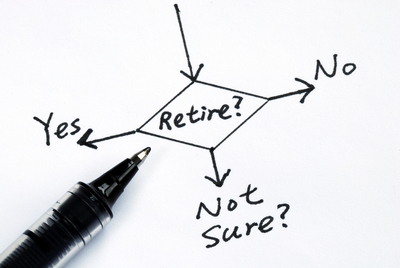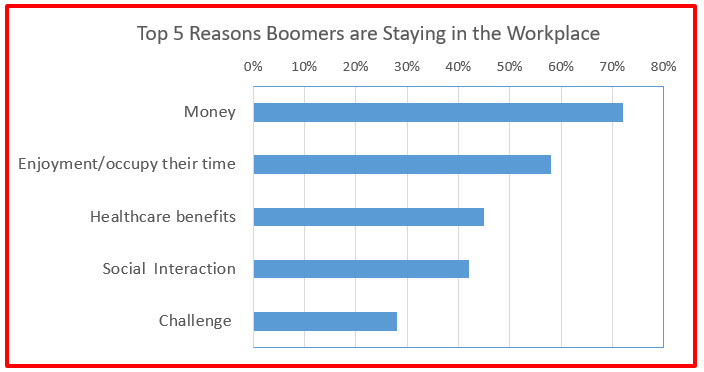
As a coach and mentor, I’m constantly watching workplace trends. They fall into three general categories: impacts from technology, generational shifts, and disruption. In previous articles, I have talked about the impacts of technology.
Let’s take a closer look at generational shifts and how they influence the workforce.
We can’t deny that the labour market has a slightly different look these days – we’re experiencing textbook disruption. Canadians are figuring out creative ways to navigate their jobs in some different conditions…and the biggest generational cohort is well equipped for this shift.
Millennials make up 37% of Canada’s employees right now – though some of them are sitting on the sidelines at the moment along with many of us – but Baby Boomers still have a significant presence. They represent 27% of the current workforce…the mass retirement that was projected a decade ago hasn’t come to fruition after all.
There’s no shortage of research into recruiting and managing Millennials, but savvy employers should also be spending time looking at Boomers. They’re still influencers…and there are ways to tap into their influence. How you address this cross-section of your workforce can pay dividends for your company in practical ways…and says a great deal about your overall corporate culture.
Where did Boomers go?
Nowhere. Most Baby Boomers haven’t retired. The vast majority delayed their retirement…for some interesting reasons.

The most obvious reason to continue working is a lack of financial stability. However, studies indicate that many Boomers got the feeling they were just hitting their professional stride in their late fifties and early sixties.
They’ve opted to maintain – or improve upon – their management positions or start a consulting business. They’re seeking out challenges, engagement, and opportunities to learn…and share their knowledge.
Many of the jobs this enthusiastic generation took on after graduation have been eliminated or changed due to advances in technology. There’s a tendency to think of this cohort as out-dated and unproductive in today’s work paradigm…ready to be put out to pasture.
But the tradition of handing your employee a gold watch and thanking them for their contributions must be put aside. We’re not ‘putting them out of their misery’ and streamlining productivity…we’re shoving institutional knowledge out the door and setting ourselves up for an uphill climb with a cohort of younger, inexperienced successors.
Consider the precedent you’re setting if you send a skilled, knowledgeable employee of 30-plus years packing because you think they can’t keep up with changing technology or new production practices. You’re signaling to all of your employees that you’re short-sighted and inflexible. You’re indicating that there’s little value in knowing the history of your company and, on the flip side, acquiring new skills at any stage of a career…
There will be very little incentive for those coming up the ranks to invest their time and energy into learning about your core values…you’ll be creating a disengaged and transient workforce.
Where can your company go?
I appreciated the award-winning movie The Intern, with Robert De Niro and Anne Hathaway. It is a funny – and fairly accurate – representation of the friction that can occur between our two largest workforce generations…and the opportunities for mutual mentorship.
Forget the gold watch. Forward-thinking companies have a golden opportunity right now. Millennials are just building up speed and stamina, and Baby Boomers have already run a marathon. They have knowledge and insight to share…with one another.
You have an opportunity to create a culture of collaboration – a culture in which mentorship is a two-way street. Boomers are well situated to be valuable coaches for the Millennial cohort…and they’re also interested in acquiring new skills that are old hat to Millennials.
Do you have a program of mentorship in your organization that helps to bridge the productivity gap between experience and new technology?
Find the common ground.
Many studies of Baby Boomers and Millennials are binary…they highlight the differences between the two generations. But they share a great deal of common ground, and this can be an asset for your company.
Millennials have a heightened social conscience. They like to feel that they’re contributing to something community-oriented, both locally and globally. Boomers aren’t that different. They’re staying at work to keep a connection with their colleagues and contribute their knowledge and experience. If they’re a long-time employee they’re clearly invested in your core values…what better way to seed future champions of your values than by putting Boomers in mentorship roles?
Millennials and Boomers are seeking challenges in their work environment. They are also very socially oriented. This is the perfect ground on which to grow a culture of collaboration and information exchange.
Take a step back and look at the areas of your business that could use some enhancement, and task your multi-generational workforce to come up with ideas that are creative, innovative and still feed your core values.
Boomers are starting their own businesses and Millennials are willing to take risks in their career…what if you tapped into that entrepreneurial drive within your company? Could it result in a new revenue stream?
It’s possible to capture the imagination of Baby Boomers, even in today’s work climate. In fact, this is probably one of the best times to have conversations with your employees about the future of your organization.
If you’d like to explore ways to create a collaborative culture contact me. There are tools you can use to build that bridge between experience and innovation.
Enjoyed this article? Here are three more to help you:
How to Effectively Measure Organizational Culture and Culture Change
New Workplace Culture Benchmarks Announced by Strategy&. How Well Do You Score?
Three Workplace Practices to Strengthen Your Workplace Culture
This article was originally published in July 2017 and was updated in 2020.


